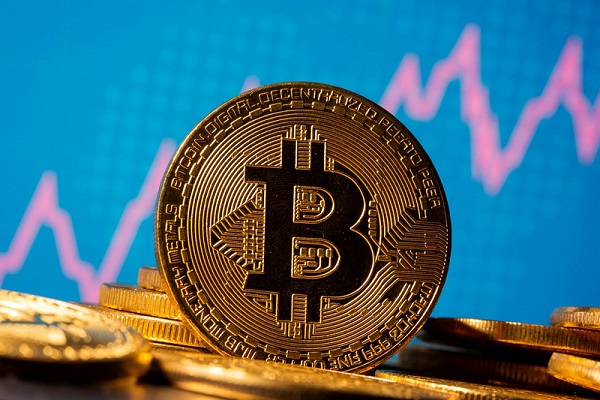Financial services firm Stifel has raised concerns over the implications of Bitcoin's recent price peak on the broader stock market.
As the world's leading cryptocurrency experiences a pullback from the recent highs, Stifel's analysis suggests that this development may foreshadow a period of uncertainty for traditional stock investments.
Bitcoin pulls back from recent highs
After climbing to a high of over $73,000 in mid-March, Bitcoin has pulled back and now trades just above the $66,000 level. In the seven days of trading, the cryptocurrency is down 5.8%.
On Tuesday, Bitcoin fell by more than 6% as a wave of selling hit cryptocurrencies and other risk assets, including stocks.
However, to put that into perspective, BTC has risen more than 56% in 2024 and over 135% over the last 12 months. The anticipated interest rate cuts, upcoming halving event, and inflows into Bitcoin ETFs are said to have helped fuel the rally.
A note from JPMorgan (NYSE:JPM) in mid-March stated that, when adjusting for volatility, Bitcoin's allocation in investor portfolios had already outpaced that of gold. Specifically, the firm said the flagship cryptocurrency had a 3.7 times greater allocation compared to the bullion.
Bitcoin top is bad for stocks - Stifel
According to analysts at Stifel, the Bitcoin top signals a weaker stock market and a shift in leadership, with Bitcoin and theNasdaq 100 reflecting the “speculative fever fostered by cheap money after dovish Fed pivots, such as occurred 4Q 2023.”
“If Bitcoin reflects euphoria after a dovish Fed, it is notable that Bitcoin (and the fever) may be peaking,” said Stifel.
The firm believes the implication of this symbolic peak in Bitcoin may be weaker "Big Tech" NASDAQ stocks, a pull-back in investor sentiment, and a simultaneous slowing/decline in the S&P 500 year-over-year percentage change, and the S&P 500 (which is cap-weighted) struggling versus the Equal-Weight S&P 500 for about 6 months.
“Historically, when the Equal-Weight S&P 500 out-performs the S&P 500 we observe that Value tends to out-perform Growth,” added Stifel. Without clear signs underpinning the Fed bullish shift in 4Q23 (e.g., weaker prospective economic growth or clear signs of inflation falling toward the Fed's 2% target), the market may have adopted a political interpretation.”
Stifel adds that it doubts the Fed pivot was political, but it feels investors' perception matters more, and using that logic, they note that recent poll differentials “also support a pull-back for major equity indices.”
